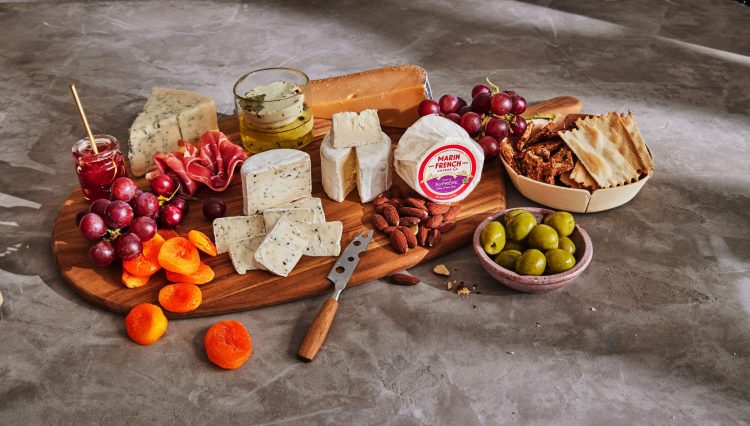Introduction to the History and Cultural Importance of Cheese in France
When you think of French cuisine, one of the first things that likely comes to mind is cheese. France is world-renowned for its diverse and rich cheese-making traditions, and cheese is woven into the very fabric of the country’s culture. From the daily consumption of cheese in households to its prominent place in fine dining, it’s evident that cheese is much more than just a food item in France—it’s a symbol of French heritage and identity.
The history of French cheese dates back centuries. Cheese has been made in France since at least the 7th century, with evidence suggesting that the Romans brought advanced techniques to the Gauls (ancient French ancestors) who already had some understanding of dairy processing. Over the centuries, France’s diverse geography and climate created the ideal conditions for the production of a wide variety of cheeses. France’s mastery of cheese-making became refined over time, and its influence on global cheese culture cannot be overstated.
Cheese became an essential part of French culinary life, particularly as its production spread across the country. By the 12th century, French monasteries were producing various types of cheese, and by the 18th century, the art of cheese-making had spread throughout rural France. Today, France is home to over 1,000 distinct varieties of cheese, with each region producing its own unique styles. Cheese is a staple in daily meals, often served as a course during lunch or dinner, and it holds a central place in social gatherings.
Different Types of Cheese and Their Regional Variations
The diversity of French cheese is one of its most defining characteristics. With each region offering its own take on cheese-making, the country’s cheese landscape is a rich tapestry of flavors, textures, and techniques. French cheese can be broadly categorized into several types, each with its own distinct qualities, but every region puts its own spin on these categories.
- Soft Cheese
Soft cheeses are some of the most iconic in French cuisine. These cheeses are known for their creamy texture and often feature bloomy rinds. Famous examples of soft cheeses include Brie, Camembert, and Neufchâtel. The region of Île-de-France is best known for producing Brie, one of the most internationally recognized French cheeses. Similarly, Camembert originates from Normandy and has become synonymous with French cheese culture. - Hard Cheese
Hard cheeses have a firmer texture and tend to have stronger flavors. Comté, from the Jura region, and Cantal, from Auvergne, are two well-known examples of hard cheeses. These cheeses are typically aged, and their complex flavors deepen with time. The French, particularly in the region of Savoie, are known for their alpine cheeses like Beaufort, which is used in many traditional French dishes, including fondue. - Blue Cheese
Blue cheeses are another prominent category of French cheese, characterized by the veins of blue mold that run through them. Roquefort, from the south of France, is perhaps the most famous blue cheese in the world. It is made from sheep’s milk and is known for its strong, tangy flavor. The Auvergne region also produces Saint-Nectaire, a semi-soft cheese with a creamy texture and slightly tangy taste, adding further variety to French blue cheeses. - Goat Cheese
France’s goat cheeses are famed for their variety and flavor. Chèvre, a blanket term for goat cheese, is produced all over France, but the most famous varieties come from regions like the Loire Valley, Provence, and Rhône Valley. Goat cheeses have a distinct tang and are often rolled in herbs or ash to enhance their flavor and aesthetic appeal. - Fresh Cheese
Fresh cheeses, such as Fromage Blanc and Brousse, are typically unripened and have a mild, soft texture. These cheeses are often served in the summer months and are popular in dishes like cheese salads, or as a dessert when mixed with honey or fruit. Fromage Blanc is particularly beloved in the regions of Languedoc and Provence.
Cheese as a Centerpiece of French Meals and Social Gatherings
In France, cheese is much more than an accompaniment to a meal—it is a central part of the dining experience. A typical French meal often includes cheese served after the main course, as a course in its own right. The traditional French dining structure consists of several courses, and cheese is an integral part of this.
Cheese is usually served with bread, but it can also be paired with fruits, nuts, or wine, depending on the type of cheese and the region. In many French homes, a cheese course is an opportunity for family and friends to gather and share stories. It is not unusual for cheese to be enjoyed in a relaxed and leisurely manner, allowing people to savor the flavors and textures of different varieties. Many French people will even keep a selection of cheeses on hand for guests, showing how cheese serves as a gesture of hospitality.
Cheese is also a key element of aperitifs (pre-meal drinks) or after-dinner moments, where it is paired with a glass of wine or a cocktail. Whether at a café, restaurant, or in someone’s home, the act of sharing cheese signifies conviviality and enjoyment of life—values deeply embedded in French culture.
In social gatherings, the types of cheese offered can also say something about the formality of the occasion. For casual gatherings, a variety of soft and hard cheeses might be presented for guests to enjoy as they converse. For more formal events, a carefully curated selection of rare and artisanal cheeses might be served, sometimes even in elaborate cheese platters that showcase the region’s finest offerings.

Best Regions to Visit for Cheese Lovers: Normandy, Burgundy, and Provence
France is home to many regions that are famous for their cheese production, and for a true cheese lover, visiting these regions is a must. Each region has its own signature cheeses and distinctive ways of making them.
- Normandy
Normandy is one of the most famous cheese-producing regions in France. It is home to Camembert, a soft, creamy cheese with a smooth, bloomy rind that is internationally adored. In addition to Camembert, the region also produces Livarot, a pungent cheese with a strong flavor, and Pont-l’Évêque, another soft cheese with a rich, creamy texture. Normandy’s lush pastures and cool climate make it the perfect place for dairy farming, which is why the region is so renowned for its cheese. - Burgundy
Burgundy, in central France, is another important cheese-producing region, known for its wide variety of cheeses. One of the most famous is Époisses, a soft, pungent cheese that has a strong aroma and a smooth, creamy interior. Époisses is often washed with brandy during its aging process, which adds a unique depth to its flavor. Burgundy is also known for producing Saint-Florentin and Chablis, cheeses that pair perfectly with the wines of the region. - Provence
Provence, known for its Mediterranean climate and sunny weather, is the perfect place for goat cheese production. The region is famous for its Chèvre cheeses, which are often made with the milk of local goats. Chèvre can be found in a wide range of textures and flavors, and it is commonly rolled in herbs, spices, or ash. The region also produces Brousse, a fresh cheese that is popular in summer dishes.
Tips for Tasting and Pairing French Cheese
If you’re a cheese lover traveling through France, here are some tips for tasting and pairing French cheese like a true connoisseur:
- Pair Cheese with Wine: France is famous for its wines, and cheese and wine pairing is a quintessential part of the dining experience. Soft cheeses like Brie pair wonderfully with light white wines, while stronger cheeses like Roquefort go best with bold reds.
- Start with Mild and Progress to Strong: When tasting multiple cheeses, it’s a good idea to start with milder cheeses and work your way up to stronger varieties. This ensures that your palate is prepared to handle more intense flavors.
- Serve Cheese at Room Temperature: For the best flavor, cheese should be served at room temperature. Allow your cheese to sit out for about an hour before serving to enhance its taste and texture.
- Use Proper Accompaniments: In addition to bread, fruits like apples or pears, and nuts like walnuts or almonds, make great complements to cheese. The sweetness of the fruit and the crunch of the nuts provide a delightful contrast to the creamy and savory flavors of cheese.
- Consider Texture and Aroma: When pairing cheese, think about the texture and aroma of the cheese. A creamy cheese like Camembert might be best enjoyed with a crusty baguette, while a firm cheese like Comté might pair well with a more rustic, hearty bread.
Conclusion
French cheese is much more than just food—it is an integral part of the country’s cultural identity and a reflection of its regional diversity. From the soft, creamy cheeses of Normandy to the pungent varieties of Burgundy, each cheese tells a story of its region, history, and craftsmanship. Cheese is a symbol of French hospitality, often shared among family and friends during meals and social gatherings. The enjoyment of cheese, with its variety of flavors and textures, remains an important part of everyday life in France.
For those who appreciate the finer things in life, French cheese offers a tantalizing journey into the heart of French culture. Whether you’re indulging in a meal at a local bistro or touring the idyllic regions of Normandy, Burgundy, and Provence, France’s cheese is a reflection of the country’s love for tradition, artistry, and community.





















